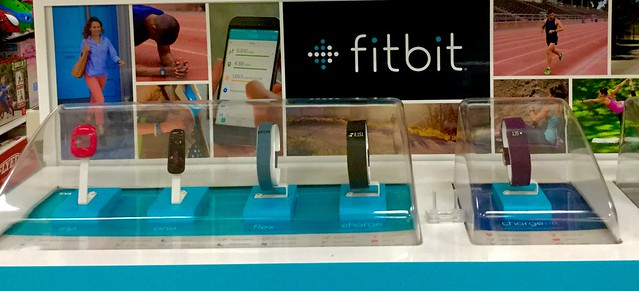Summary
The networked devices you purchase aren't products as we've historically understood that term. You're not buying the device, you're buying the service. Fitbit is just a interface to a networked service. Without the service, the device is good for nothing.

In the taxonomy of Bruce Sterling's Shaping Things, the Fitbit is a Gizmo.
"Gizmos" are highly unstable, user-alterable, baroquely multifeatured objects, commonly programmable, with a brief lifespan. Gizmos offer functionality so plentiful that it is cheaper to import features into the object than it is to simplify it. Gizmos are commonly linked to network service providers; they are not stand-alone objects but interfaces. People within an infrastructure of Gizmos are "End-Users."
People buy Fitbits believing that they're buying a thing, but in fact, they're buying a network service. The device is merely the primary interface to that service. The Fitbit is useless without the service. Just a chunk of worthless plastic and silicon.
The device is demanding. We buy Fitbits and then fiddle with them incessantly. Again, to quote Bruce:
...Gizmos have enough functionality to actively nag people. Their deployment demands extensive, sustained interaction: upgrades, grooming, plug-ins, plug-outs, unsought messages, security threats, and so forth.
Sometimes we're messing with them cause we're bored and relieve it with a little configuration. Often we're forced to configure and reconfigure because its not working. We feel guilt over buying something we're not using. Usually, the Fitbit ends up in a drawer unused after the guilt wears off and the pain of configuration overwhelms the perceived benefit.
Fitbit isn't selling things. They probably fancy themselves selling better health or fitness. But, Fitbit is really selling a way to measure, and perhaps analyze, some aspect of your life. They package it up like a traditional product and put it on store shelves, but the thing you buy isn't a traditional product. Without the service and the account underlying it, you have nothing.
Of course, I'm not talking about Fitbit alone. Fitbit is just a well-known example. Everything I've said applies to every current product in the so-called Internet of Things. They are all just interfaces to the real product: a networked service. I say "so-called" because a more appropriate name for the Gizmo ecosystem is CompuServe of Things.
Bruce's book is a trail guide to what comes after Gizmos: something he calls a "spime." Spimes are material instantiations of an immaterial system. They begin and end with data. Spimes will have a different architecture than the CompuServe of Things. To work, they will cooperate and interact in true Internet fashion.




